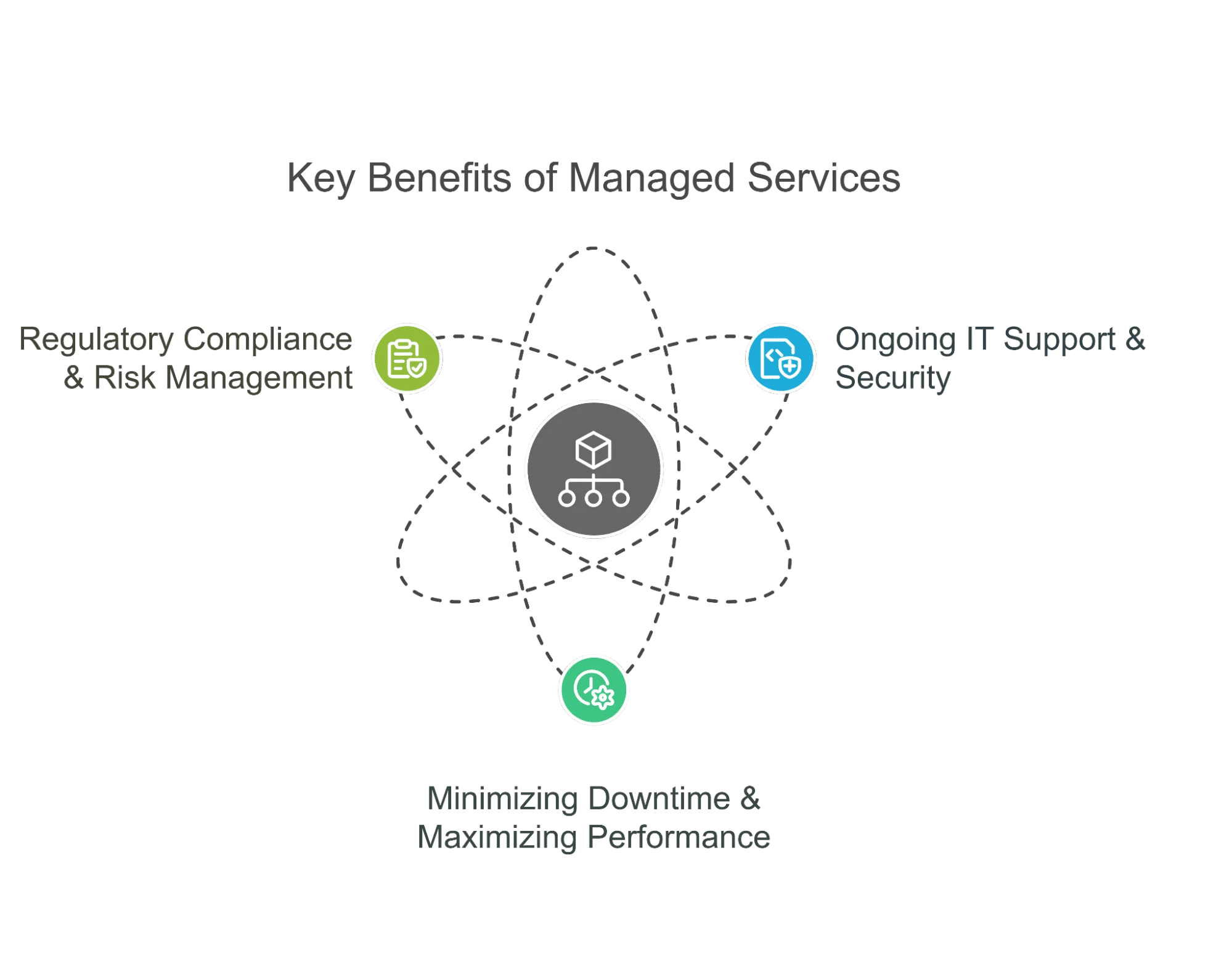Managing IT in-house isn’t easy. The costs pile up, skilled professionals are hard to find, and technology keeps evolving. That’s why over 94% of organizations outsource IT services—they need expert support without the hassle of hiring and managing an internal team.
But not all outsourcing models are the same. Should you bring in temporary professionals through staff augmentation, or is a managed services approach better? Choosing the wrong model can lead to inefficiencies, higher costs, and security risks.
| As Hitesh Patel, CEO of WPG Consulting, says, “The right IT support model should remove complexity, reduce risk, and help businesses focus on growth.” |
Let’s break down the key differences between staff augmentation vs managed services so you can make the best choice for your business.
What is Staff Augmentation?
Staff augmentation is a flexible outsourcing model that allows businesses to temporarily expand their IT team by hiring skilled professionals on a contract basis. Instead of committing to full-time employees, you get access to specialized talent when and where you need it.
When Should You Use Staff Augmentation?
- Short-Term Projects: Ideal for filling skill gaps on a temporary basis.
- Peak Workloads: Helps your in-house team handle seasonal spikes or high-demand periods.
- Cost-Effective Scaling: Avoids the overhead of full-time hiring while keeping projects on track.
Potential Drawbacks of Staff Augmentation
- Increased Management Overhead: Contractors require onboarding, supervision, and integration into your workflows.
- Limited System Familiarity: Temporary staff may lack deep knowledge of your infrastructure, slowing productivity.
- Knowledge Retention Risks: When contracts end, so does their expertise—leaving potential gaps in your IT strategy.
What are Managed Services?
Managed services involve outsourcing your IT operations to a third-party provider that takes full responsibility for maintenance, security, and support. Instead of hiring temporary staff, businesses gain access to continuous, proactive IT services with flexible pricing options. MSPs offer different pricing models, so you can choose what fits your business best—for example, paying per user, per device, a fixed monthly fee, or a tiered plan based on service levels.
When Are Managed Services the Right Choice?
- Ongoing IT Support & Security: Ideal for businesses that need 24/7 monitoring, rapid issue resolution, and cybersecurity protection.
- Minimizing Downtime & Maximizing Performance: Ensures your systems stay operational, preventing costly disruptions.
- Regulatory Compliance & Risk Management: Helps meet industry security requirements with expert oversight and proactive measures.
- Cost Savings & Efficiency: According to CloudSecureTech, managed services can cut your IT costs by 25% and increase your operational efficiency by 50%, helping you optimize resources without overspending.

Potential Drawbacks of Managed Services
- Less Direct Control: IT operations are handled externally, which may not suit businesses that prefer in-house oversight.
- Vendor Selection Matters: Choosing the wrong provider can lead to inefficiencies, service gaps, or misalignment with business needs.
Outsource Smarter: Fully Managed, Always SecureGet top-tier IT professionals exactly when you need them, without the hiring hassle. |
Key Differences Between Staff Augmentation and Managed Services
1. Cost Structure
- Staff Augmentation: Pay-as-you-go pricing, typically hourly or project-based. Costs can escalate over time, especially for long-term needs.
- Managed Services: Various pricing models let you find the most appropriate option for your business, whether it’s a predictable monthly fee, usage-based billing, or a customized package.
2. Flexibility
- Staff Augmentation: Scales your team on demand, but you still manage workloads, training, and oversight.
- Managed Services: Fully outsourced IT support with minimal internal management required, freeing your team to focus on core business goals.
3. Scalability
- Staff Augmentation: Requires frequent onboarding and offboarding of contractors based on workload fluctuations.
- Managed Services: Easily adapts to business growth, adding IT resources without hiring or training new staff.
4. Risk Management & Compliance
- Staff Augmentation: Your organization remains responsible for security, compliance, and risk mitigation.
- Managed Services: The provider ensures compliance with industry regulations, reducing security risks and handling ongoing cybersecurity management.
5. Proactive vs. Reactive Approach
- Staff Augmentation: Primarily a reactive solution—contractors address specific tasks but don’t necessarily improve overall IT operations.
- Managed Services: Proactive monitoring, automation, and optimization to prevent IT issues before they happen.
Comparison of Staff Augmentation vs. Managed Services
|
Feature |
Staff Augmentation |
Managed Services |
|
Cost Structure |
Pay-per-hour or project-based pricing. Can become expensive over time. |
Flexible pricing models—per user, per device, fixed monthly fees, or tiered plans based on service levels. |
|
Best For |
Short-term projects, filling skill gaps. |
Long-term IT strategy, proactive management, and security. |
|
Scalability |
Requires hiring and offboarding contractors based on demand. |
Easily scales IT resources without additional hiring. |
|
Security & Compliance |
Internal oversight required for security and regulatory compliance. |
Provider ensures compliance with industry standards and regulations. |
|
Management Burden |
Higher—requires internal management, training, and oversight. |
Lower—MSP handles IT operations, reducing internal workload. |
|
Proactive vs. Reactive |
Reactive—contractors address tasks but don’t optimize overall IT. |
Proactive—monitoring, automation, and prevention of IT issues before they impact operations. |
|
More articles you might like: |

Choosing the Right IT Model for Long-Term Success
Choosing between staff augmentation vs managed services depends on your IT needs, but for long-term stability, security, and efficiency, managed services deliver the best value. While staff augmentation helps with short-term skill gaps, it still leaves management and security on your plate. Managed services provide full IT oversight, proactive security, and continuous optimization—so your business runs without interruptions.
WPG Consulting is a trusted MSP, delivering comprehensive IT solutions that scale with your business. Contact us today to see how fully managed IT can support your growth and security.
|
Discover Trusted Managed IT Services Near You |


